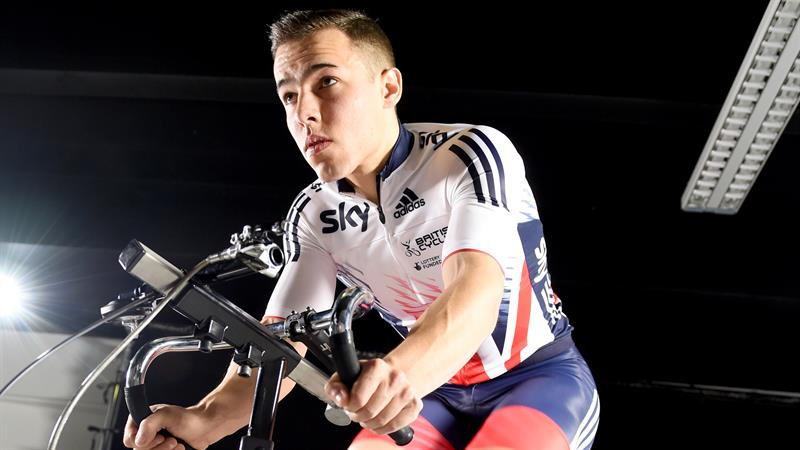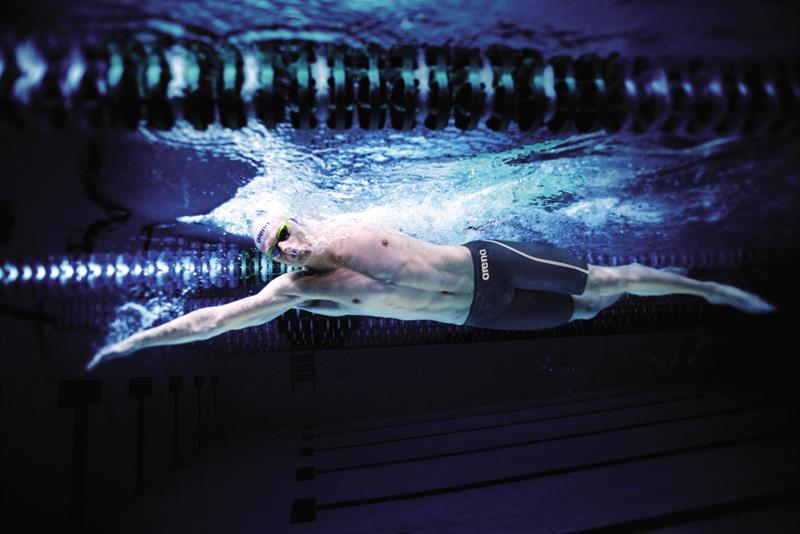It is not easy to gain much competitive advantage from the equipment used in Olympic competition. The attraction of the Olympics is to see athletes winning gold for doing things faster, higher and stronger. As a consequence, and to ensure there is a level playing field for all competitors, the governing bodies of the individual sports can be very prescriptive about the equipment used. But, winning is all important so these restrictions don’t stop the quest for a competitive advantage.
Most athletes would attribute their success to their own hard work and dedication, but everyone – even the best – can do with that extra bit of help. Hannah Cockcroft was a double gold medallist at the 2012 Paralympics specialising in sprint distances in the T34 classification, and is competing in three events in Rio this year. She holds the Paralympic and world records for both the 100 metres T34 and 200 metres, and is one of the many beneficiaries of the project UK Sport is running with BAE Systems to help British athletes succeed in Rio.
“For me it has changed my positioning in the chair,” she explained. “At the London Olympics my feet were down which created drag, but this chair holds them up to improve the airflow. It is a slight adaptation of the chair. It depends on the disability of the athlete; some need their feet down while some can strap them up. It was really just having that little bit of assistance to find out what was best and if it could be improved to aid my performance.
“I can feel a difference because it is slightly more uncomfortable, but you can see a difference when it comes to timing - a difference of 0.1 second can be the difference between winning or losing.”
Aerodynamics play a big part in these speed sports. Increases in speed result is a squared increase in drag, so such differences as posture and helmet shape can be critical. Although Cockcroft is now reaching 20mph in training (‘Hopefully a gold medal winning speed,” she says) the fastest British athlete is David Weir. It was therefore him who was subjected to the wind tunnel tests at BAE Systems site in Warton, Lancashire, a facility normally reserved for testing scale models of Typhoon fighter jets.
While positioning will be the big consequential change for the Rio Olympics, in London it was for helmets that are still being used. Cockcroft observed that further testing may result in there being a different style for the sprints from the longer distance events.
The collaboration between BAE Systems and UK Sports started with an individual project in 2007 and then formalised into an agreement that currently runs until 2017, but seems likely to be extended.
Nigel Whitehead, group managing director programmes and support, commented: “We don’t know and will never know what incremental difference we made but we like to think we are part of that team and that feels fantastic. [It involves] employment of some specialised engineers – aerodynamicists, hydrodynamicists, structural engineers, system engineers – some of the very best of what we do in the UK applied to a particular set of problems and challenges faced by our athletes. It’s an exciting and rewarding thing to be involved in.”
Already the programme has been involved with 250 athletes across 30 sports and at London 2012 contributed to teams that won 19 medals and a further five golds at the Paralympics.
While the focus is very much on the summer games in Rio, one of the best examples of British engineering coming to golden fruition in the skeleton bob used in the Winter Olympics in 2010. It was designed specifically for Amy Williams in terms of weight distribution so that when she went down the run, the runners were always in contact with the ice, which is tremendously efficient from an engineering point of view.
Reference to such past glories reflects one of the main problems when trying to report on the programme – in order to protect any advantages that it might deliver, it needs to be kept secret.
 One training device that BAE is willing to disclose is the ergometer that it developed along with the British Cycling team. The system measures the work-rate and energy expended by cyclists and is capable of replicating the inertial forces of a velodrome more accurately than any other testing tool. The vital data collected includes gas and blood analysis, and enables testing at high speeds to analyse the athlete’s technique.
One training device that BAE is willing to disclose is the ergometer that it developed along with the British Cycling team. The system measures the work-rate and energy expended by cyclists and is capable of replicating the inertial forces of a velodrome more accurately than any other testing tool. The vital data collected includes gas and blood analysis, and enables testing at high speeds to analyse the athlete’s technique.
Paul Barratt, lead biomechanist for the Great Britain Cycling Team at the English Institute of Sport said: “Every performance on the world stage requires elite athletes to be at their best. Highly-accurate testing tools such as the cycling ergometer help to ensure athletes are performing at their most competitive. BAE Systems has created a portable and accurate system that we believe will be integral to the team’s training regimes and will help us to achieve our medal winning target at the Rio Games.”
As well as track events such as sprints and endurance rides, the cycling ergometer can also be used to test the performance of cyclists involved in road events. It has proven instrumental for track stars including Sir Chris Hoy and Sir Bradley Wiggins.
The benefits to BAE Systems vary from developing skills sets and team building, to the creative use of new technologies. One of the prime drivers is the role it plays in introducing children to the power of engineering.
Whitehead said: “The whole issue of inspiring the next generation translates universally because we need the next generation of engineers to be interested in science, technology and maths. And we need them to be interested before those subjects get difficult at school so they continue studying them, and we have a role in doing that. We have to keep feeding the pipeline and our relationship with UK Sport is helping us to do that.”
Let us hope that both our Olympians and the next generation of engineer’s benefit.
Material matters in Rio Swimsuit design has caused some controversy over the years. In particular, the 2009 World Championships in Rome, when swimming world records were tumbling in almost every event, it resulted in the full length polyurethane swimsuits being banned. It was clear to the sport by then that substantial physiological and even psychological benefits lie in how elite swimmers were clad, and for that the new rules minimised the potential of these benefits. However, it was still worth continuing to look at developing the engineering behind swimwear. One of the leading suppliers is Arena and it had started a development programme before the Beijing Olympics in 2008. “I think it’s fair to say that the perception was that Speedo [with its LZR swimsuits] were ahead at that stage,” said Andy Milton of Innovia Technology, the design agency who worked with Arena to come up with an alternative. One of the curious aspects to the project was the design process at Innovia, whose role has been to screen and develop ideas at a very early stage. Milton said: “Where we work upfront, we are often screening ideas. We need to have understanding and for that, we’ve used FEA type work but often the pencil and paper, when understanding of what works and what doesn’t, is the thing that we use a lot. Put another way, a lot of my ideas are stupid. And I come up with a lot of them, and I can often kill them using pencil and paper ballparks, just to show this is not going to work. And that’s a really useful and valuable tool.” Some of these ideas that Innovia started, literally on the drawing board, now feature in the Arena’s latest Powerskin ranges. These include the use of anisotropic stretch that provides flexibility in one direction and all important muscle compression in another, and an ‘x-pivot system’, which is the format of the seams and panels in the women’s suit that provides a connect between shoulder and opposite hip to make swimming more efficient. One of the biggest changes in swimsuits is the materials they are made of and in particular the use of carbon fibre which helps with the compression. Carbon fibre is only 1% of the material, the rest is 52% nylon and 47% elastane. But how much difference does this make? “You can’t do pen and paper analysis and prove this suit makes X percent difference,” Milton concluded. “You can understand the physical effects and it’s certainly possible that they could make a difference. And that difference, that could be the winning margin between two swimmers.” |











